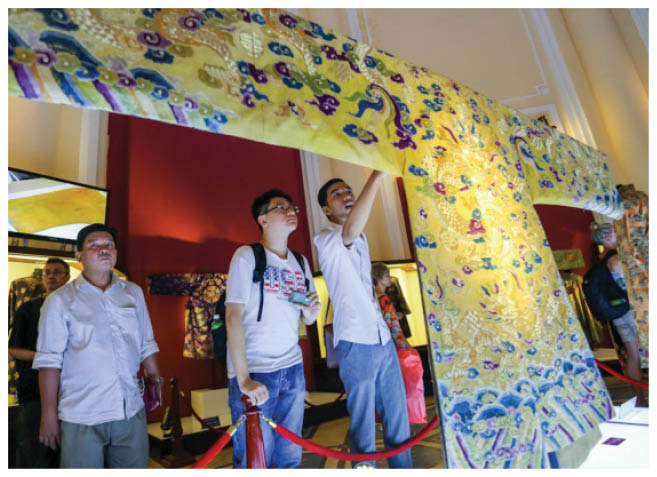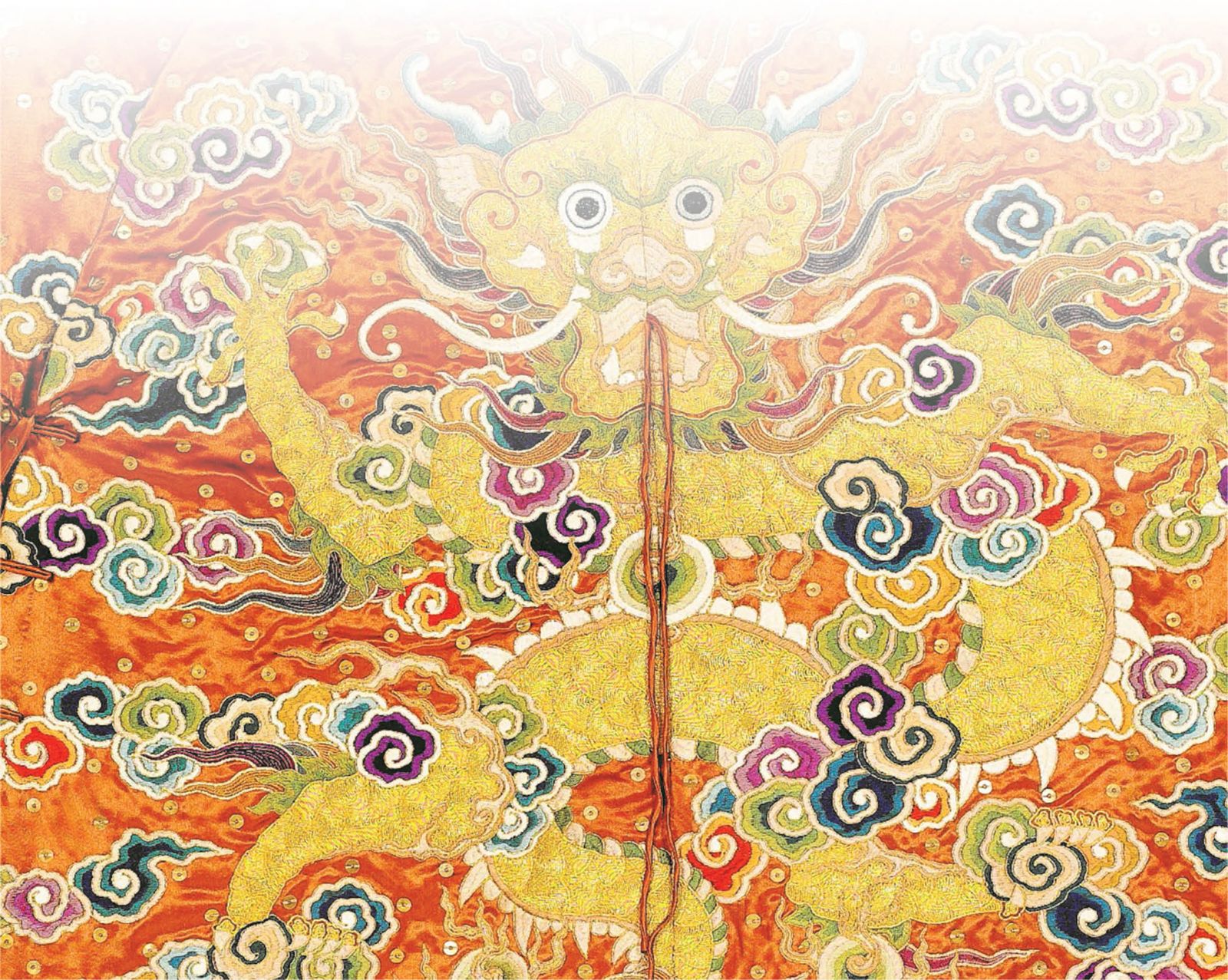That is a very exciting venue for visitors and Hue people to admire part of the costume heritage of Vietnam.

Costume for the second-ranked mandarin of the Nguyen dynasty at the exhibition “Golden Velvet and Brocade.” Photo: QUYNH TRAN
People in the old days considered costume “the starting point of the ritual, the civilization, to distinguish man from animals.” Each monarchy marked its beginning by changing the calendar and costume, and naming the era.
It shows the importance of costume in expressing power and the political direction of the dynasty. In the Nguyen’s era, costume for various classes in the society were strictly regulated, based on criteria for material, color and pattern.
Dr. Huynh Thi Anh Van, Director of Hue Museum of Royal Antiquities emphasized that in addition to ritual institutions, the Nguyen emperors, especially the first ones, paid much attention to costume worn in rituals. Costume for the king, mandarins and other members in the royal family abided by detailed rules to prove virtues.
In 1806, emperor Gia Long had Nam Giao Esplanade built to make sacrificial offerings to heaven. The costume for Nam Giao Festival was then decided. The emperor also employed costume to show status. Costume for big ritual events consisted of hat, robe, belt, gown, shoes and stockings. Costume for the emperor in big events was embellished with gold, diamond and precious gems.
Royal costume of the Nguyen dynasty was of various types with their own names and colors. The reproduced dragon robe on display at the museum is gorgeous and meticulously made. Imperial majesty can be seen through shiny golden brocade with dragon-in-clouds pattern on it.
According to Dr. Tran Duc Anh Son, former director of Hue Museum of Royal Antiquities, costume for the king and mandarins were made of high-quality silk ordered from China.
Emperor Gia Long and emperor Minh Mang often sent people to China to buy brocade in Nan-ching and Chiang-nan to make costume for the royal family. However, from Thieu Tri’ era, the Nguyen dynasty turned to Ha Dong yellow silk and brocade for the imperial court since the Qing dynasty refused to sell yellow silk and brocade, saying that it was reserved for Chinese kings only. Households making traditional silk were requested to send high-quality silk to the imperial court instead of paying money as tax.

Dragon patterns on the frontal part of the robe for the Nguyen emperor. Photo: HAI TRUNG
In 2012, the antique collector Nguyen Huu Hoang collaborated with Hue Monuments Conservation Center to display the 15 original artifacts including the robe for the king, the robe for the queen, the costume for Bat Dat dancers in the court music orchestra, the costume for tuong (classical Vietnamese opera), the robe for the prince and the costume for mandarins in big ritual events in the Imperial City.
In Hue Traditional Craft Festival 2015, 12 out of those 15 artifacts were again on display. It was a rare occasion for visitors and Hue people to admire the original costume artifacts of the last monarchy of Vietnam.
In the book A Thousand Years of Robes and Hats, Tran Quang Duc provides an extensive look at the costume of the Nguyen dynasty. According to him, when the Nguyen lords arrived in the South, they wanted to be independent from the imperial court of the Trinh lords in the Outer Realm. It was Lord Nguyen Phuc Khoa that decided to change rituals and costume for the people in the imperial court and the populace (1744). Partly learning from the costume of the Le dynasty, with reference to the shirt with collar and buttons of the Ming dynasty, the Nguyen lords and kings created a quite different costume from those of the previous dynasties.
“The Cuu Long Thong hat and the Cuu Long Duong Can for the emperor, the Phoc Dau, Ho Dau, Xuan Thu hats for mandarins embellished with gold and silver, the long bao, mang bao embroidered with patterns such as dragons in clouds and waves, etc., are typical of the costume of the Nguyen dynasty,” stressed the researcher Tran Quang Duc.
One of the highlights of Hue Museum of Royal Antiquities this year is its intention to display for the first time the collection of original royal costume which the museum owns. The exhibition is promisingly an interesting and overwhelming event for visitors, the public and researchers who are interested in this type of artifact.
Story: Dong Van